Community Development
By Dr. Glenda Eoyang with Ajay Reddy, Founder of Spryng.io
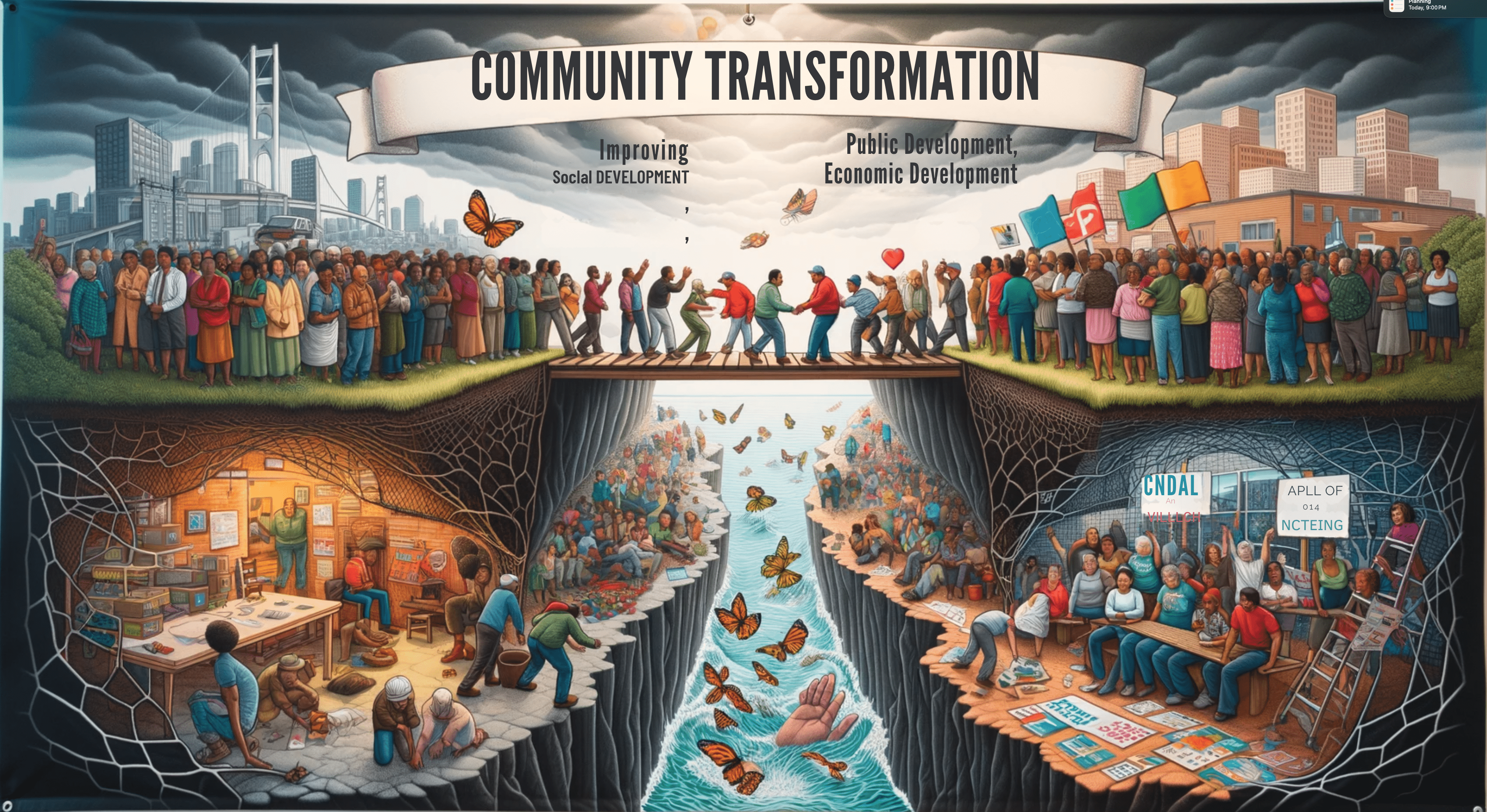
Community Development is challenging
Community change has never been easy. If you focus on shifting patterns of social determinants of health, safety, public will, economic development, justice or well being you know the daunting chasm between good intention and effective action. Many complicated approaches have evolved over the past decade to address this pervasive challenge.
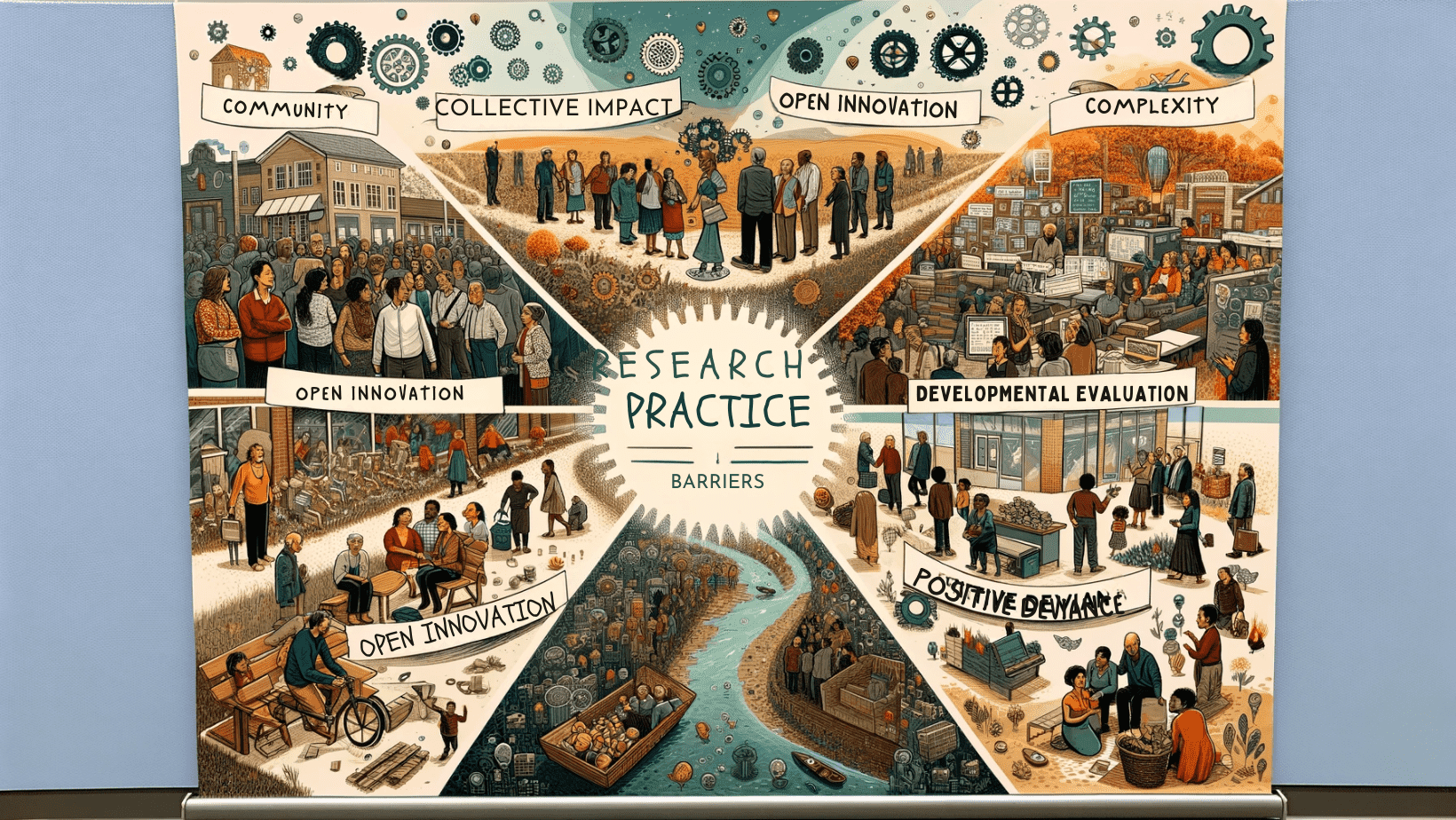
Many approaches have been tried
Collective impact, Open Innovation , Developmental Evaluation , and Positive Deviance are only some of the methods that have emerged to bridge this thought-to-action barrier. Each of these works beautifully in particular conditions, but none of them is universally applicable and all of them are costly and problematic to implement. Research and practice in the complex dynamics of human systems has revealed an approach that is simple, universally useful, and freely accessible.

A Strategy for Community Development
Adaptive Action is an essential survival strategy in uncertainty. Rather than waiting for complete and reliable data about the future, Adaptive Action invites you to use what you can know to do what you can do. Rather than investing in plans that are sure to fall apart, Adaptive Action uses local intelligence to make realistic, practical plans for immediate action. Rather than wasting time negotiating opinions about the unknown, Adaptive Action helps you take collective action from islands of coherence. Best of all, Adaptive Action is so simple a child can do it. In fact, children do it instinctively as they learn to walk and talk. Only grownups rely on prediction and control to inform what they do and how they do it. Children know better, and people who thrive in chaos rediscover the Adaptive Action alternative out of necessity.
What is this powerful, simple survival strategy? It is an inquiry cycle of observation, sensemaking, and action.
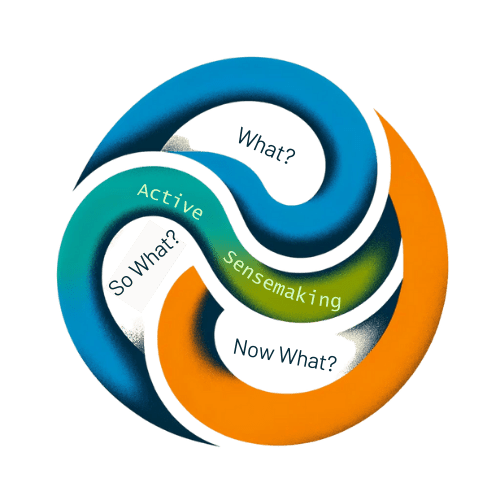

The What? Evidence to describe the challenge
Adaptive Action begins with the question WHAT? This question connects you with the real world that surrounds you. In times of turbulence, you may care about what is happening across town or on the other side of the world, but you need to focus on what is right in front of you, right now. Of course, when you engage in Strategic Adaptive Action , your “immediate” context will be longer term and wider scope, but every cycle should be focused at the time and space that is most fit for your current challenge.
This first step in the Adaptive Action cycle is the data collection step. It isn’t about envisioning what you want or critiquing what has passed. It is about viewing current reality as clearly and objectively as possible. Data may be qualitative or quantitative, first-hand or inherited. You gather as much information as possible in the slice of time you have. You do not expect to get a complete picture before moving on to step 2. Whatever you know is enough to move on. In fact, you can never know all the relevant variables in complex adaptive systems, because they are open to external influences. Whatever you know now is likely to be different soon. Whatever you see around you has the potential to change without warning. When you ask WHAT? you collect available data and prepare yourself for whatever is next.
Traditional methods of data collection typically do not meet these requirements. Statistical analysis, massive data sets, surveys, focus groups, or even artificial intelligence cannot always give useful answers to the WHAT? question. Active Sensemaking can.
Gathering self-interpreted stories from a population of interest paints a richer picture of complex reality. This approach is especially relevant when dealing with intractable issues for example, community experiences with immigration, where there are many challenges, many competing agendas, many beliefs, many nuances where traditional collection methods like opinion surveys or cookie cutter policies or solutions can contribute to inadvertent consequences from inadequate understandings.
Consider an Active Sensemaking project aimed at exploring a community’s varied experiences with immigration. Such an inquiry could be a pivotal part of an Adaptive Action cycle for community leaders formulating policies and initiatives. It's about understanding the multifaceted nature of immigration, recognizing both its blessings and challenges.
Participants may be invited to participate in a study designed to capture the breadth of immigration experiences within our community. Participants’ stories, whether they reflect positive or negative aspects, are invaluable in shaping a balanced understanding.
Stories are prompted by questions like -
- Share an experience where immigration has been a remarkable blessing or deeply problematic.
- Describe a situation where immigrants were either welcomed or excluded by the community.
- Recount an instance highlighting the value or problems immigration has brought to the community.
Participants participation is not limited to a single story. The more experiences shared, the richer the insights. After a participant shares their story, a few interpretive questions will follow, helping us understand the deeper meaning of your experience. They are invited to share another “Tell Another Story” button to add more self interpreted anecdotes.shaping a balanced understanding.
Click here to see more of this SAMPLE questionnaire. Please note that this is for illustration purposes only and is not intended for actual use. Designing a questionnaire like this involves more than just "copy-pasting" a template. Central to the methodology is the active engagement of leaders in shaping the inquiry questions. With that disclaimer in mind, you are welcome to try out the link and share your own story of immigration to experience how Active Sensemaking story collection works.
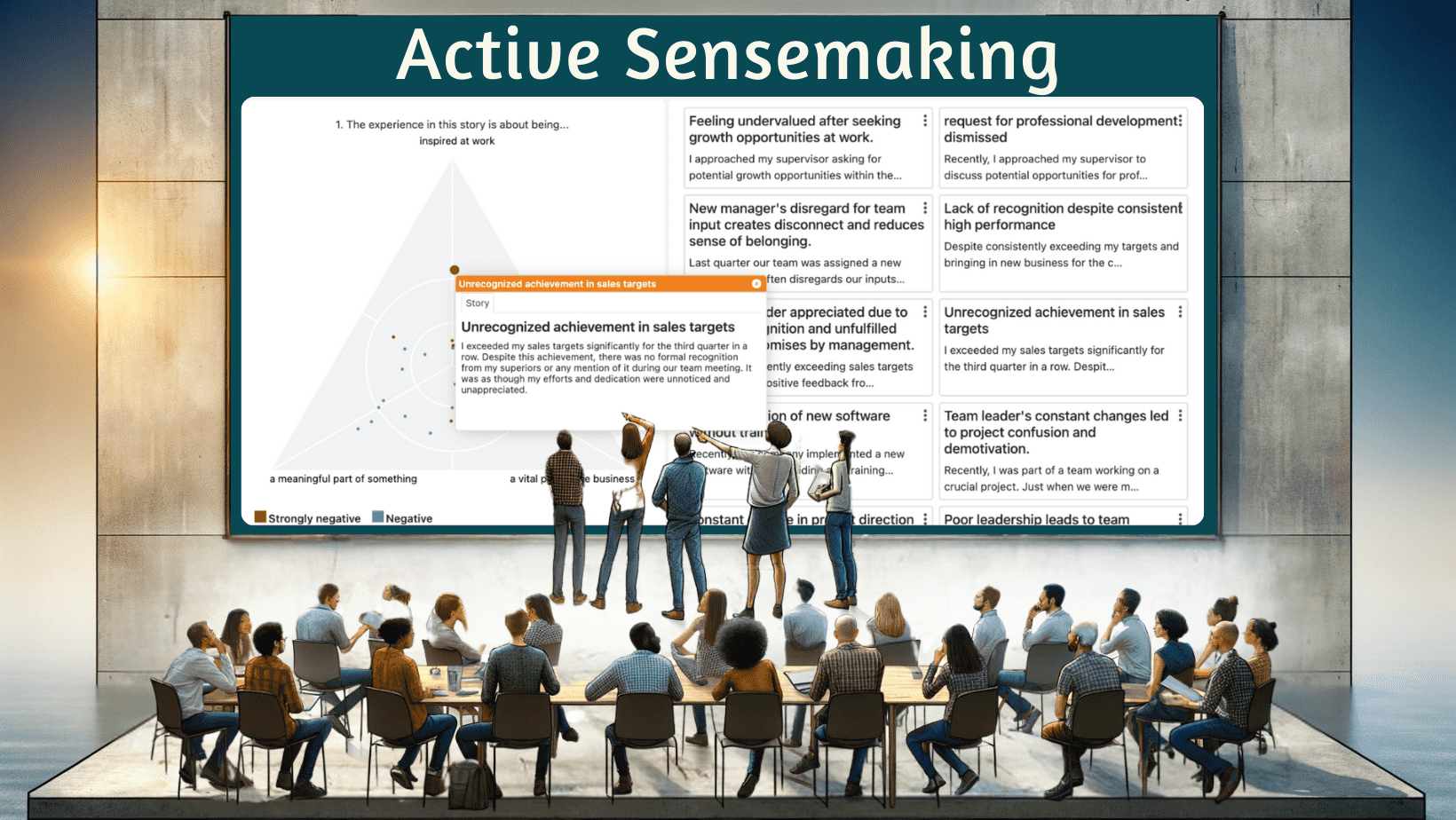
So, What? Pattern spotting with Active Sensemaking
The second question of the Adaptive Action cycle is SO WHAT? Active Sensemaking is useful here, too. In this step, you consider the current situation, looking for patterns and options for action. This is the analysis, sensemaking step of the process, where you create hypotheses and think through their implications.
In less turbulent and more certain times, this step can be quick, and it is often totally ignored. If you have encountered the same patterns before, and you can assume they won’t change, you might even skip this step entirely. On the other hand, when you face rapid and unpredictable change, this becomes the most important step of the process. It requires imagination, creativity, courage, and systemic intelligence. Whether you work alone or in a group, this step requires you to explore a wide range of possibilities, so you can choose an action that brings the most benefit and least risk.
Active Sensemaking supercharges this process of meaning making. It allows you to access both individual detail and system-wide patterns at the same time. It provides a wide range of perspectives and interpretations. Best of all, it lays out the data in a way that encourages thoughtful and creative analysis. It also continues to collect and incorporate new data in real time, as the system adapts to whatever is emerging. Structured facilitation techniques allow large groups to make shared meaning and prepare for collective action, based on the simple graphical representation of whatever has been collected.
Because a picture is worth a thousand words, we invite you to explore an interactive dashboard. Click on the image below to see the section on patterns of how a community may experience Immigrations. Explore for yourself to see the power and possibility of Active Sensemaking.
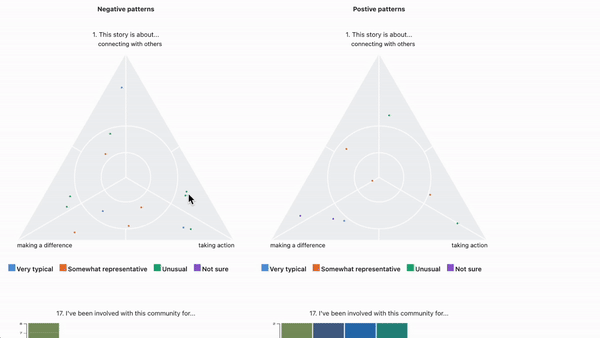
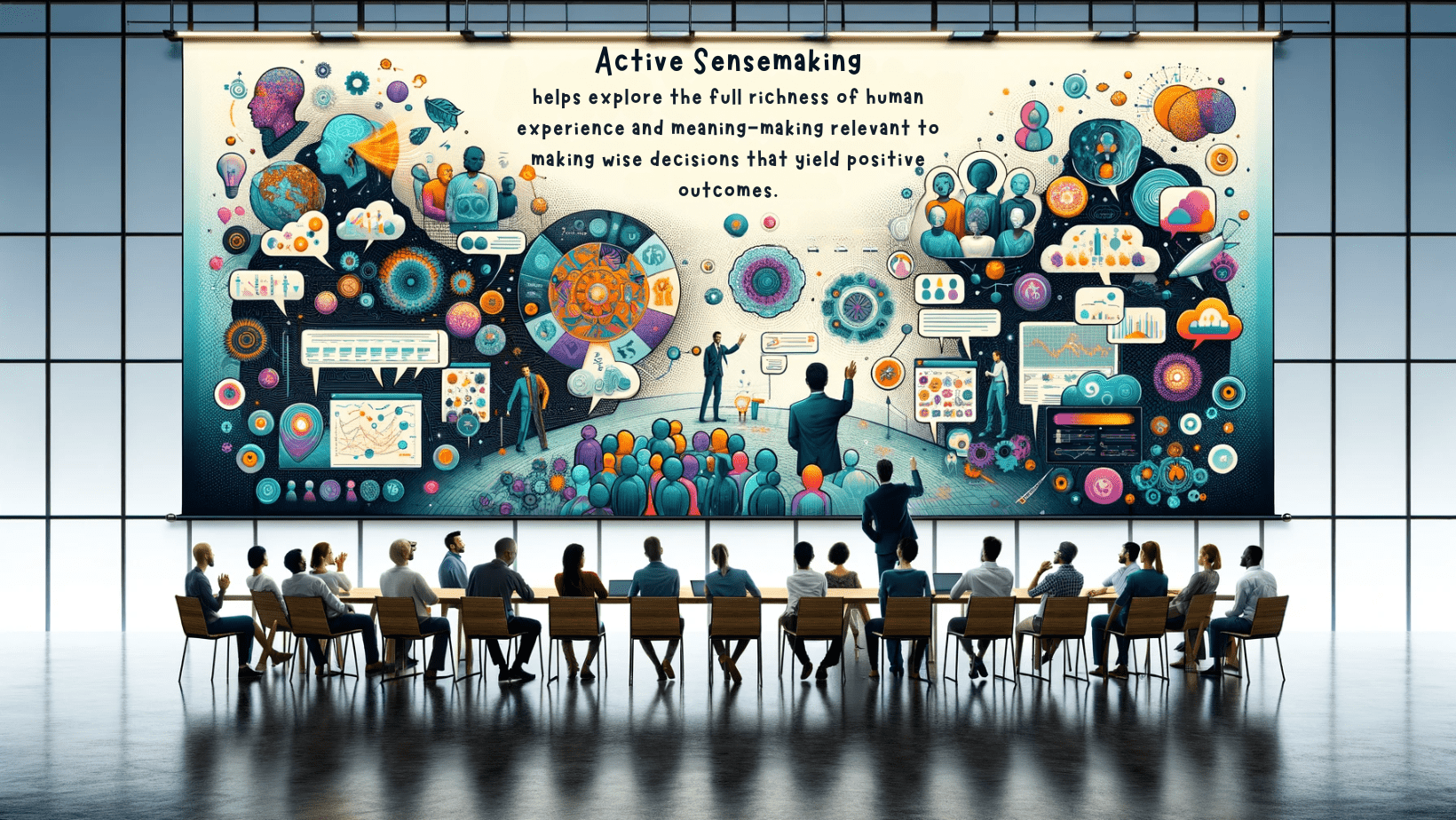
Now What? Active Sensemaking in Evaluation and Wise Actions
The final step of an Adaptive Action focuses on a single option for action. One “next wise action” is selected from among those explored in the previous step. Plans may be made. Partners are invited and encouraged and informed. Resources aligned. Then, action may be taken, and the next cycle begins with an investigation of the consequences of that action—the next WHAT?
People who have shared their stories already may feel engaged in the action. The granularity of the data, in participants’ own words, can inform the narrative that motivates or justifies action. Evaluation indicators and potential allies can be gleaned from the stories. Finally, ongoing data collection can immediately inform the next cycle of data collection, meaning making, and action.
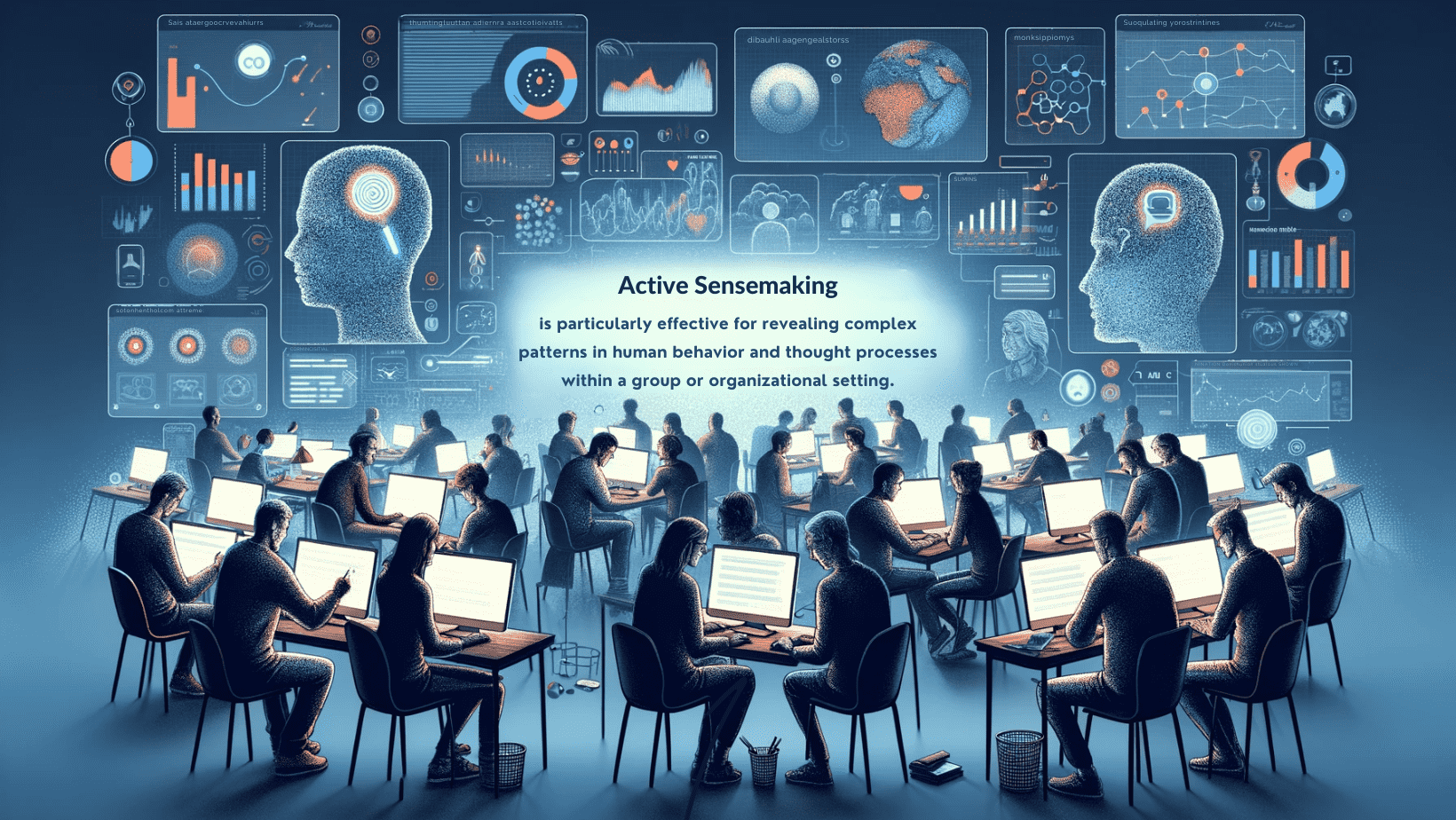
Active Sensemaking Scaling Adaptive Actions
Active Sensemaking enhances every phase of the Adaptive Action cycle, regardless of the challenge's nature or the question's complexity. It has proven effective for individuals and groups, addressing both long-term and immediate challenges across various domains, including community and commercial transformation, personal and professional decision-making, and influencing patterns in physical, emotional, cultural, social, and political realms.
While smaller groups offer numerous ways to engage participants creatively, Active Sensemaking's true prowess is its scalability. It extends Adaptive Actions to larger populations, from dozens to thousands, each contributing unique and valuable insights. This scalability is crucial in respecting every voice and the complexity of human groups.
In the "What," "So What," and "Now What" stages of Adaptive Action, we witness these actions unfold, revealing deeper layers within each phase. Active Sensemaking emerges as an indispensable tool in this process. It not only complements the capacity of Adaptive Actions to navigate complexity but also enables the scaling of Active Sensemaking. It's now possible to efficiently collect at scale and interpret the individual voices and collective wisdom of groups, from a few dozen to hundreds of thousands of participants. This capability ensures that every voice is heard and contributes to the broader understanding and decision-making process.
This process can be visualized as a fractal of Adaptive Loops, where each loop represents a cycle of inquiry, understanding, and action. Like a fractal, each loop is both distinct and part of a larger pattern, reflecting the dynamic and interconnected nature of Adaptive Action and Active Sensemaking. This fractal visualization underscores the iterative, evolving nature of understanding and responding to complex challenges, ensuring that every voice contributes to the broader decision-making process.



Now What for you?
If you are involved in community transformation, Adaptive Action and Active Sensemaking will equip you to succeed, even in today’s turbulence and uncertainty. You can learn about the approach and practice using it on a challenge you face today! Join a team of experts to -
